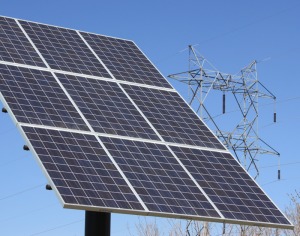Two Democratic gubernatorial candidates Jared Polis and Mike Johnston want to take Colorado where no state has gone before – 100 percent renewable energy by 2040. And it won’t be cheap. $44,880,000,000, according to our newly released study titled, “The Cost & Impact of a 100 Percent Renewable Energy Portfolio Standard for the State of Colorado.”

The figure represents what Coloradans would have to pay to add the necessary wind and solar capacity, utility scale battery storage, and retire the state’s entire coal and natural gas fleet. Not included within the scope of the study are transmission costs, land acquisition costs, nor reclamation of retired sites, which are likely to add billions of dollars more.
Not even California dared to do that. In fact, this fall, Californians were smart enough to kill their 100 percent by 2045 legislation due to concerns over the “speed, pathway, feasibility, and, ultimately, the need for converting to 100 percent,” reported Greentech Media.
Welcome to Colorado’s dystopian energy and environmental policy, where we balance green fantasies on the backs of the working poor and at the expense of economic activity; where we destroy Colorado’s famous view sheds and ecosystems with millions of acres of industrial wind and utility scale solar in the name of climate change.
$44.88 billion is nearly $8,100 for every man, woman, and child currently in Colorado, more than $32,000 for a family of four. It’s safe to say that the cost would drive up electric rates and drive low-income ratepayers deeper into energy poverty. It’s morally reprehensible to balance green fantasies and fears of climate change on the backs of Colorado working families.
The conversion also would be land intensive. For just the necessary industrial wind, Polis and Johnston would need to build turbines and destroy view sheds on somewhere between 497,596 acres to well in excess of 1.36 million acres – that’s an area the size of Boulder, Broomfield, Clear Creek, Denver, and Jefferson counties combined.
The study, done by Energy Ventures Analysis and commissioned by the Independence Institute, examined the Polis and Johnston pledges because no one was asking either candidate how he would implement such a plan, and the candidates themselves haven’t provided many details.
![]() The report also points out that no one even knows if 100 percent renewable generation by 2040 is technologically possible. For instance, attempting to put that much wind on to the grid will challenge operators due to the fact that there is a significant difference between “the time of peak demand and the time of peak wind generation.”
The report also points out that no one even knows if 100 percent renewable generation by 2040 is technologically possible. For instance, attempting to put that much wind on to the grid will challenge operators due to the fact that there is a significant difference between “the time of peak demand and the time of peak wind generation.”
As with other states, Colorado’s wind generation is strongest during “off-peak” times, late at night or early in the morning. According to EVA’s models by the early 2030s, wind generation during off-peak times will exceed demand. The solution will be either massive investments in large scale battery storage, a technology that isn’t fully developed, or curtailment – meaning rolling brown outs and black outs – or a combination of both.
However, at a mere $2.23 billion, the state could go the Aspen and Telluride route and purchase Renewable Energy Credits (RECs), which are a less expensive, but an intellectually dishonest, alternative. Under the REC scenario, Coloradans would pay other states like Oklahoma or Texas to produce electricity from wind and solar but “none of the renewable energy associated with these RECs would actually flow to Colorado” because “the RECs represent merely the environmental attributes of the generation, not the energy itself.”
Ironically, under a REC scenario, EVA estimates that 65 percent of Colorado’s electricity generation still would come from fossil fuels. All we’d be doing is sending $2.23 billion to other states so a governor, who won’t even be in office in 2040, could make an intellectually dishonest claim that Colorado is 100 percent renewable.
No other state is matching Polis and Johnston’s irresponsible deadline. Hawaii has a 100 percent by 2045 mandate but Hawaii is different because it must import all of its hydrocarbons, not so with Colorado. Pennsylvania lawmakers have proposed legislation and New Jersey’s recently elected governor has promised 100 percent by 2050. As mentioned earlier, not even California is as foolish as Polis and Johnston.
Colorado voters should consider themselves warned.
If voters elect a candidate who forces them to spend anywhere from $2.23 to $44.5 billion so they can feel environmentally superior to California, so be it. The state also will have to own the morally reprehensible label. At least now they can do it with their eyes wide open.
Amy Oliver Cooke is Executive Vice-President, and Director of the Energy and Environmental Policy Center at the Independence Institute, a free market think tank in Denver.


